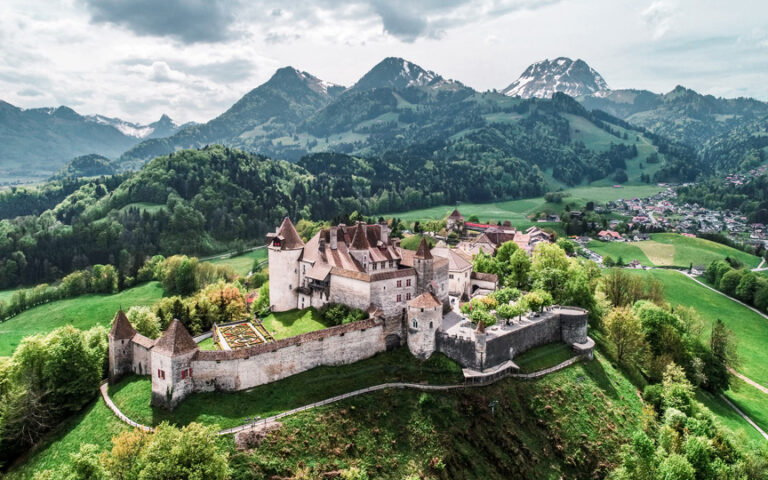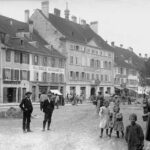The Town Hall building dates from 1809, four years after the fire that destroyed the town. Formerly the seat of the city burghers, it houses the communal authorities and stands on the Grand-Rue, the main shopping thoroughfare of Bulle.
Under the Ancien Régime, the society that predated the French Revolution, the Town Hall was the seat of authorities representing the “noble and honourable bourgeoisie”; the latter included families who benefited from the rights of the bourgeoisie and the privileges that went with it; they lived alongside the “townsfolk”, who were “tolerated” but considered as outsiders. Members of the bourgeoisie and townsfolk alike were governed by the patricians of the city-state of Fribourg, represented in Bulle by the bailiff, who occupied the castle. The ways of the Ancien Régime disappeared with the invasion of the French army in 1798 and the foundation of the Swiss Republic.
After the fire of 1805, the town of Bulle experienced serious financial problems. However the council wished to rebuild the Town Hall quickly. The work of drawing up plans was given to Charles de Castella and that of construction to the entrepreneur Frédéric Rosselet. After long-drawn-out discussions and the raising of an additional tax, the Town Hall was inaugurated in 1809, i.e. three years after the first stone was laid in 1806.
The Town Hall dominates nearby buildings but has nothing prestigious about it. Its relatively austere façade reflects the circumstances of its construction, namely one of the most difficult periods in the history of Bulle. The town council held its first meeting there on 29 October 1808. Throughout the time work was in progress, the authorities occupied the Les Halles building. At that time the ground floor housed an inn and shops, converted into coffee rooms at the end of 1829 and later into a post office. The ground floor façade was converted twice, around 1900 and 1950. The pediment of the Town Hall, which represents the town’s coat of arms surrounded by two lions, was constructed in 1957 by the marbler Alexandre Bellora, a native of Bulle, after a drawing by Antoine Claraz, from Fribourg.
Today the building is home to the local authorities and some of the town’s administrative services. The ground floor is occupied by a restaurant (currently closed). The hall at the rear of the Town Hall was the venue for many editions of the festival Les Francomanias (French songs) between 1990 and 2010.
© Musée gruérien and Cultural Heritage Department of the canton of Fribourg
Archive photo:
Bulle, Grand-Rue and Town Hall, circa 1910.
© Charles Morel Musée gruérien
La Gruyère Tourisme
Centre commercial Velâdzo (rez inférieur)
Place de la Gare 3
1630 Bulle



















